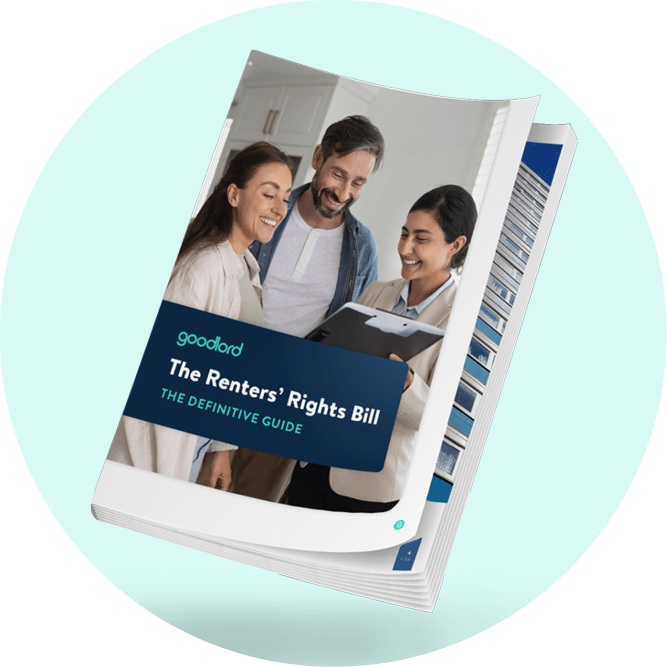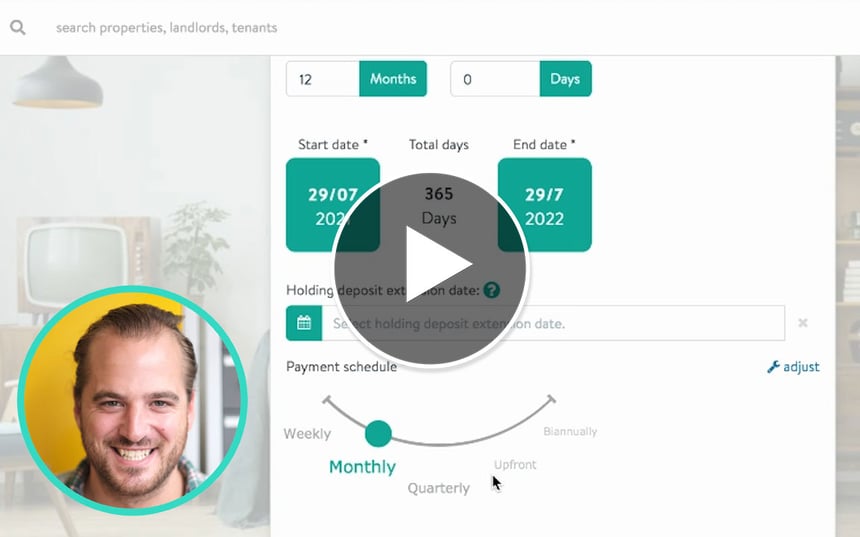How to check a tenant's right to rent: A letting agency's guide
Failing to comply with Right to Rent can result in hefty fines. Here’s how technology helps to ensure compliance and improve your agents' efficiency.
Improving compliance is a top-three priority for letting agents according to 2024’s State of the Lettings Industry Report, released in October.
One of the easiest (and quickest) ways you can do this is by tightening up your agency’s right to rent processes.
While many agencies still rely on manual document checking, government-accredited Identification Document Validation Technology (IDVT) is far more robust and secure, reducing the liability of your agents and the risk of non-compliance.
Moreover, this technology helps you improve tenant referencing efficiency and free up your agents from cumbersome admin.
In this blog, we’ll tell you everything you need to know about how to check right to rent, plus how Goodlord can help.
- What is a right to rent check?
- Why do letting agencies need to comply with right to rent checks?
- When should letting agents conduct right to rent checks?
- Who’s subject to right to rent checks?
- What documentation can tenants provide in a right to rent check?
- How to check right to rent: Manual vs IDVT
- How Goodlord streamlines right to rent checks for letting agencies
- Conclusion
What is a right to rent check?
A right to rent check is a legal requirement for UK landlords to verify that their prospective tenants have permission to live in the country. This involves checking documents such as passports, visas, and residence permits — either in person, or via government-accredited technology — before renting out their property.
Given that 29% of landlords cited compliance as the main advantage of using a letting agent, you need to be aware of all the key criteria involved in a right to rent check.
Why do letting agencies need to comply with right to rent checks?
Failing to conduct proper right to rent checks can be financially devastating.
For example, first-time offenders can be fined up to £10,000, while repeat offenders face fines of £10,000 to £20,000 per tenant. Meanwhile, fines for non-compliance surged by 577% in the first quarter of 2024, showing the increased enforcement of these regulations.
But that’s not all.
Non-compliance could also negatively impact your agency’s reputation, preventing you from keeping existing customers and gaining new business.
When should letting agents conduct right to rent checks?
Right to rent checks can be completed at any time before the tenancy starts unless the tenant is only allowed to stay in the UK for a limited time. In this case, you need to complete the check in the 28 days before the tenancy begins.
Who's subject to right to rent checks?
Anyone applying to rent in the UK is subject to right to rent checks. These checks are required for all prospective tenants aged 18 or older, regardless of whether they’re named on the tenancy agreement. It’s illegal to check tenants based on nationality or perceived immigration status selectively.
What documentation can tenants provide in a right to rent check?
The documentation tenants need to provide depends on their immigration status.
British or Irish Citizens
According to the UK government, British or Irish citizens can prove their right to rent by showing their landlord or letting agent:
- A British passport (current or expired)
- An Irish passport or passport card (current or expired)
- A certificate of registration or naturalisation as a British citizen
Non-British or Irish citizens
If your prospective tenants aren’t British or Irish citizens, they can prove their right to rent with:
Anyone with a biometric residence card/permit or a UK Visas and Immigration (UKVI) account can generate a share code. Once tenants give you their share codes, you can check their immigration details.
As a result, you can see whether your tenants are allowed to rent at all, and if so, for how long.
Other ways of proving right to rent
If tenants either can’t provide any of the above or a citizenship certificate, they may be able to use other documents to prove their right to rent. These include:
- A current UK driving licence (full or provisional)
- A full birth or adoption certificate from the UK, Guernsey, Jersey, the Isle of Man or Ireland
- A letter from their employer
- A letter from a British passport holder in an ‘accepted profession’
- A letter from a UK government department or local council
- Proof that they currently get benefits
- A letter from a British school, college, or university they go to
- A Disclosure and Barring Service (DBS) certificate
- Proof that they’ve served in the UK armed forces
- A letter from a private rented sector access scheme or a voluntary organisation that’s helping them with housing
- A letter confirming they’ve been released from prison within the past 6 months
- A letter confirming they’re on probation from their offender manager
- A letter from the UK police about the theft of their passport
For the specific criteria each of these alternative documents need to meet, visit the Government website.
The Home Office online right to rent check
On rare occasions, tenants may:
- Be waiting for their right to rent status to be determined
- Not be able to provide the necessary documentation because the Home Office has them
In these cases, agents can request a Home Office right to rent check via an online form to ensure they stay compliant.
How to check right to rent: Manual vs IDVT
There are two key ways letting agents can conduct right to rent checks.
1 - Manual
This involves verifying the tenant's original documents and collecting their share codes in person.
In this process, agents must confirm that the documents are genuine and belong to the tenant to prove their right to rent.
One of the main downsides of manual checks is that documents rely on an “eye test” to be approved, putting pressure on your agents to make a judgement call.
There’s also limited formal training to help agents root out fraudulent applications.
2 - IDVT
Identification Documentation Validation Technology (IDVT) is provided by government-accredited Identity Service Providers (IDSPs). Its purpose is to automate the verification of identity documents, significantly reducing the time and effort required for manual checks.
By scanning documents and checking features like watermarks and embedded chips, IDVT also allows you to assess the authenticity of tenant documentation with confidence.
In contrast to manual checks, IDVT minimises the risk of fraudulent applications, reduces human error and ensures compliance with Right to Rent regulations.
Do agents still need to perform an imposter check?
While IDVT automates the process of verifying tenant documents, agents still need to perform an imposter check on behalf of landlords. This confirms that tenants aren’t posing as anyone else to secure a rental property.
For example, you could verify the identity of a tenant during a property viewing.
On the other hand, if a tenant can’t view the property in person, you’d need to check that their photograph and biographic details were legitimate via video call.
How Goodlord streamlines right to rent checks for letting agencies
Our platform helps you manage the entire lettings journey in one place while staying compliant. This includes right to rent checks.
For example, Goodlord integrates with Credas, a government-certified IDSP, allowing you to validate your tenants’ right to rent. We also collect share codes on your agents’ behalf.
Vera Rogers, Head of Administration at Milburys, outlines how our platform reduces stress by automating compliance:
“When there's a change in legislation, we rely on Goodlord. They know about legislation and compliance because they've got the legal team. They will change the tenancy agreements. It's on the system the next day, and I am sending contracts that are already compliant.”
Conclusion
Given the financial and reputational damage non-compliance can cause, ensuring tenants have the right to rent your clients’ properties is essential.
While you can do this manually, there are significantly fewer risks involved when you use IDVT.
This article is intended as a guide only, and should not be considered legal advice. For more information, visit gov.uk











